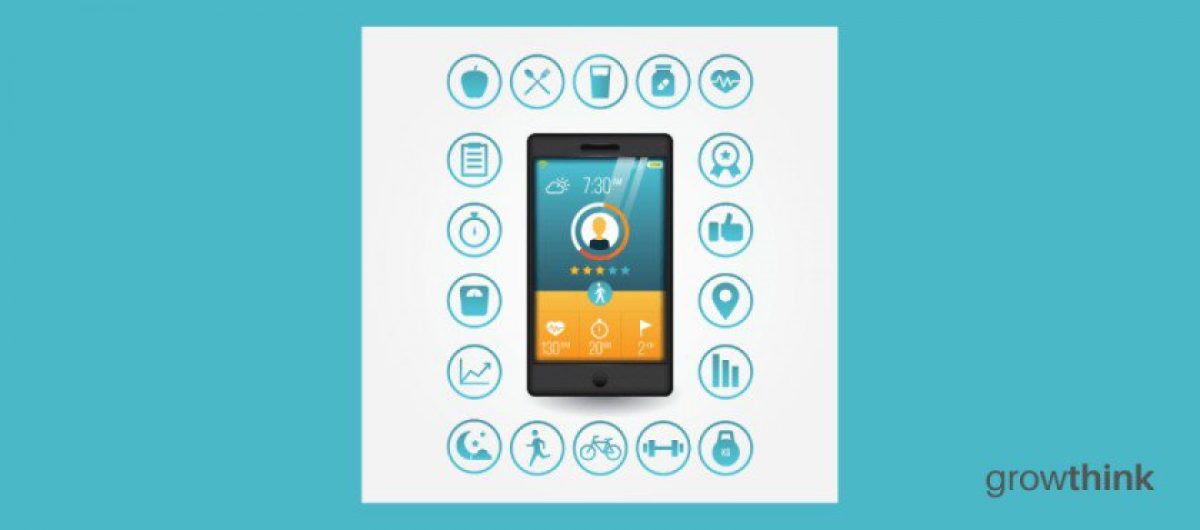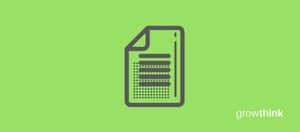Mobile App Business Plan
Over the past 20+ years, we have helped over 5,000 entrepreneurs and business owners create business plans to start and grow their app development company. On this page, we will first give you some background information with regards to the importance of business planning. We will then go through a mobile app business plan template step-by-step so you can create your plan today.
What is a Mobile App Business Plan?
A business plan provides a snapshot of your mobile app as it stands today, and lays out your growth plan for the next five years. It explains your business goals and your strategy for reaching them. It also includes market research to support your plans.
Why You Need a Business Plan for a Mobile App Company
If you’re looking to launch a mobile app or grow your existing mobile app you need a business plan. A business plan will help you raise funding, if needed, and plan out the growth of your mobile app in order to improve your chances of success. Your business plan is a living document that should be updated annually as your company grows and changes.
Source of Funding for Mobile App Companies
With regards to funding, the main sources of funding for a mobile app are personal savings, credit cards, bank loans, angel investors and venture capitalists. With regards to bank loans, banks will want to review your business plan and gain confidence that you will be able to repay your loan and interest. To acquire this confidence, the loan officer will not only want to confirm that your financials are reasonable. But they will want to see a professional plan. Such a plan will give them the confidence that you can successfully and professionally operate a business.
The second most common form of funding for a mobile app is angel investors. Angel investors are wealthy individuals who will write you a check. They will either take equity in return for their funding, or, like a bank, they will give you a loan.
Venture capitalists will also fund a mobile app and will take equity in return for their funding, VC funding generally comes after you’ve received initial proof of concept or traction with your app.
Finish Your Business Plan Today!
If you’d like to quickly and easily complete your business plan, download Growthink’s Ultimate Mobile App Business Plan Template and complete your plan and financial model in hours.
How To Write a Business Plan For a Mobile App Development Company
Your business plan should include 10 sections as follows:
Executive Summary
Your executive summary provides an introduction to your business plan, but it is normally the last section you write because it provides a summary of each key section of your plan.
The goal of your Executive Summary is to quickly engage the reader. Explain to them the type of app business you are operating and the status; for example, are you a startup, do you have a mobile app that you would like to grow, or do you already have several successful app businesses?
Next, provide an overview of each of the subsequent sections of your plan. For example, give a brief overview of the mobile app industry. Discuss the type of mobile app you are operating. Detail your direct competitors. Give an overview of your target customers. Provide a snapshot of your marketing plan. Identify the key members of your team. And offer an overview of your financial plan.
Company Analysis
In your company analysis, you will detail the type of mobile app you are operating.
For example, you might operate one of the following types:
- Business app: this type of mobile app generally helps increase productivity and/or decrease costs.
- Entertainment app: this type of mobile app includes news, social networking, music, video, etc.
- Lifestyle app: this type of mobile app includes things like fitness, shopping, dating, etc.
- Education app: this type of app must have the primary objective of advancing a user’s knowledge and overall breadth in a particular subject.
- Utility app: this type of app includes things like scanners, trackers, health-related apps, cell service providers, etc.
- Travel app: this type of app aids in planning and booking trips.
- Other app: there are a limitless number of areas in which a successful app could be created
In addition to explaining the type of mobile app you operate, the Company Analysis section of your business plan needs to provide background on the business.
Include answers to questions such as:
- When and why did you start the business?
- What milestones have you achieved to date? Milestones could include sales goals you’ve reached, new store openings, etc.
- Your legal structure. Are you incorporated as an S-Corp? An LLC? A sole proprietorship? Explain your legal structure here.
Industry Analysis
In your industry analysis, you need to provide an overview of your app development business.
While this may seem unnecessary, it serves multiple purposes.
First, researching the mobile app industry educates you. It helps you understand the market in which you are operating.
Secondly, market research can improve your strategy particularly if your research identifies market trends. For example, if there was a trend towards quiz apps, it would be helpful to ensure your plan incorporates gamification into your app.
The third reason for market research is to prove to readers that you are an expert in your industry. By conducting the research and presenting it in your plan, you achieve just that.
The following questions should be answered in the industry analysis section:
- How big is the app industry (in dollars)?
- Is the market declining or increasing?
- Who are the key competitors in the market?
- Who are the key suppliers in the market?
- What trends are affecting the industry?
- What is the industry’s growth forecast over the next 5 – 10 years?
- What is the relevant market size? That is, how big is the potential market for your mobile app? You can calculate this figure by multiplying the size of your target customer market by the amount they might spend per year on your app.
Customer Analysis
The customer analysis section must detail the customers you serve and/or expect to serve.
The following are examples of customer segments: business operations managers, college students, sports enthusiasts, soccer moms, techies, teens, baby boomers, etc.
As you can imagine, the customer segment(s) you choose will have a great impact on the type of mobile app you operate. Clearly, baby boomers would want different pricing and product options, and would respond to different marketing promotions than teens.
Try to break out your target customers in terms of their demographic and psychographic profiles. With regards to demographics, include a discussion of the business types (if B2B), ages, genders, locations and income levels of the customers you seek to serve.
Psychographic profiles explain the wants and needs of your target customers. The more you can understand and define these needs, the better you will do in attracting and retaining your customers.
Finish Your Mobile App Business Plan in 1 Day!
Don’t you wish there was a faster, easier way to finish your business plan?
With Growthink’s Ultimate Mobile App Business Plan Template you can finish your plan in just 8 hours or less!
Click here to finish your Mobile App business plan today.
Competitive Analysis
Your competitive analysis should identify the indirect and direct competitors your business faces and then focus on the latter.
Direct competitors are other app businesses in your niche.
Indirect competitors are other options that customers have to achieve similar results to what your app offers.
With regards to direct competition, you want to detail the other app development companies with which you compete. Most likely, your direct competitors will be mobile app businesses offering the same type of service or activity that yours does.
For each such competitor, provide an overview of their businesses and document their strengths and weaknesses. Unless you once worked at your competitors’ businesses, it will be impossible to know everything about them. But you should be able to find out key things about them such as:
- What types of customers do they serve?
- What products do they offer?
- What is their pricing (premium, low, etc.)?
- What are they good at?
- What are their weaknesses?
The final part of your competitive analysis section is to document your areas of competitive advantage. For example:
- Will you provide superior features?
- Will you provide better customer service?
- Will you offer better pricing?
Think about ways you will outperform your competition and document them in this section of your plan.
Marketing Plan
Traditionally, a marketing plan includes the four P’s: Product, Price, Place, and Promotion. For an app business, your marketing plan should include the following:
Product: in the product section, you should reiterate the type of mobile app that you documented in your Company Analysis. Then, detail the specific features of your app.
Price: Document how you will price your app and if there will be different pricing levels (e.g., free, entry, premium) and what those levels will be.
Place: Place refers to your distribution method. Document how customers can download your app (e.g., from your website, the Apple Store, Google Play, etc.).
Promotions: the final part of your mobile app marketing plan is the promotions section. Here you will document how you will drive customers to your app(s). The following are some promotional methods you might consider:
- Social media advertising
- Advertising in magazines, newspapers and/or trade journals
- Reaching out to local bloggers and websites
- Pay per click advertising
Finish Your Business Plan Today!
If you’d like to quickly and easily complete your business plan, download Growthink’s Ultimate Mobile App Business Plan Template and complete your plan and financial model in hours.
Operations Plan
While the earlier sections of your business plan explained your goals, your operations plan describes how you will meet them. Your operations plan should have two distinct sections as follows.
Everyday short-term processes include all of the tasks involved in running your mobile app such as writing code, building upgrades, fixing bugs, providing customer service, etc.
Long-term goals are the milestones you hope to achieve. These could include the dates when you expect your 10,000th app install, or when you hope to reach $X in sales. It could also be when you expect to hire your Xth employee or launch a new location.
Management Team
To demonstrate your mobile app’s ability to succeed as a business, a strong management team is essential. Highlight your key players’ backgrounds, emphasizing those skills and experiences that prove their ability to grow a company.
Ideally you and/or your team members have direct experience in app development business. If so, highlight this experience and expertise. But also highlight any experience that you think will help your business succeed.
If your team is lacking, consider assembling an advisory board. An advisory board would include 2 to 8 individuals who would act like mentors to your business. They would help answer questions and provide strategic guidance. If needed, look for advisory board members with experience in mobile apps and/or successfully running small businesses.
Financial Plan
Your financial plan should include your 5-year financial statement broken out both monthly or quarterly for the first year and then annually. Your financial statements include your income statement, balance sheet and cash flow statements.
Income Statement: an income statement is more commonly called a Profit and Loss statement or P&L. It shows your revenues and then subtracts your costs to show whether you turned a profit or not.
In developing your income statement, you need to devise assumptions. For example, will you have 100 downloads per week or 200? And will sales grow by 2% or 10% per year? As you can imagine, your choice of assumptions will greatly impact the financial forecasts for your business. As much as possible, conduct research to try to root your assumptions in reality.
Balance Sheets: While balance sheets include much information, to simplify them to the key items you need to know about, balance sheets show your assets and liabilities. For instance, if you spend $100,000 on building out your mobile app, that will not give you immediate profits. Rather it is an asset that will hopefully help you generate profits for years to come. Likewise, if a bank writes you a check for $100.000, you don’t need to pay it back immediately. Rather, that is a liability you will pay back over time.
Cash Flow Statement: Your cash flow statement will help determine how much money you need to start or grow your business, and make sure you never run out of money. What most entrepreneurs and business owners don’t realize is that you can turn a profit but run out of money and go bankrupt.
In developing your Income Statement and Balance Sheets be sure to include several of the key costs needed in starting or growing a mobile app:
- Cost of equipment like computers, data warehousing, etc.
- Payroll or salaries paid to staff and independent contractors
- Business insurance
- Taxes and permits
- Legal expenses
Appendix
Attach your full financial projections in the appendix of your plan along with any supporting documents that make your plan more compelling. For example, you might include your store design blueprint or location lease.
Summary
Putting together a business plan for your mobile app is a worthwhile endeavor. If you follow the template above, by the time you are done, you will truly be an expert. You will really understand the app business, your competition and your customers. You will have developed a marketing plan and will really understand what it takes to launch and grow a successful mobile app.
Mobile App Business Plan FAQs
What Is the Easiest Way to Complete My Mobile App Business Plan?
Growthink's Ultimate Mobile App Business Plan Template allows you to quickly and easily complete your Mobile App Business Plan.
Where Can I Download a Free Mobile App Business Plan PDF?
You can download our mobile app business plan PDF template here. This is a template you can use in PDF format to create a business plan for an app.
Finish Your Mobile App Business Plan in 1 Day!
Don’t you wish there was a faster, easier way to finish your Mobile App business plan?
With Growthink’s Ultimate Mobile App Business Plan Template you can finish your plan in just 8 hours or less!
Click here to finish your Mobile App business plan today.
OR, Let Us Develop Your Plan For You
Since 1999, Growthink has developed business plans for thousands of companies who have gone on to achieve tremendous success.
Click here to see how Growthink’s professional business planning advisors can create your business plan for you.


 Download a Free Business Plan Template
Download a Free Business Plan Template How to Make a Successful Business Plan
How to Make a Successful Business Plan 100 Sample Business Plans
100 Sample Business Plans Expert Business Plan Consultants
Expert Business Plan Consultants The Perfect Business Plan Layout for a Great Plan
The Perfect Business Plan Layout for a Great Plan Use This Business Plan Structure to Expertly Write Your Plan
Use This Business Plan Structure to Expertly Write Your Plan